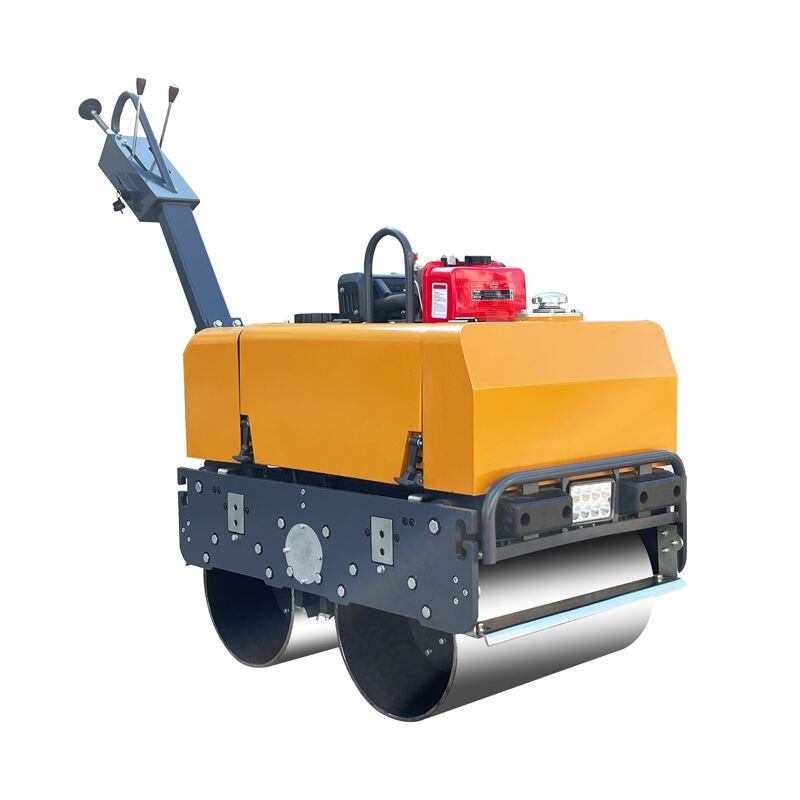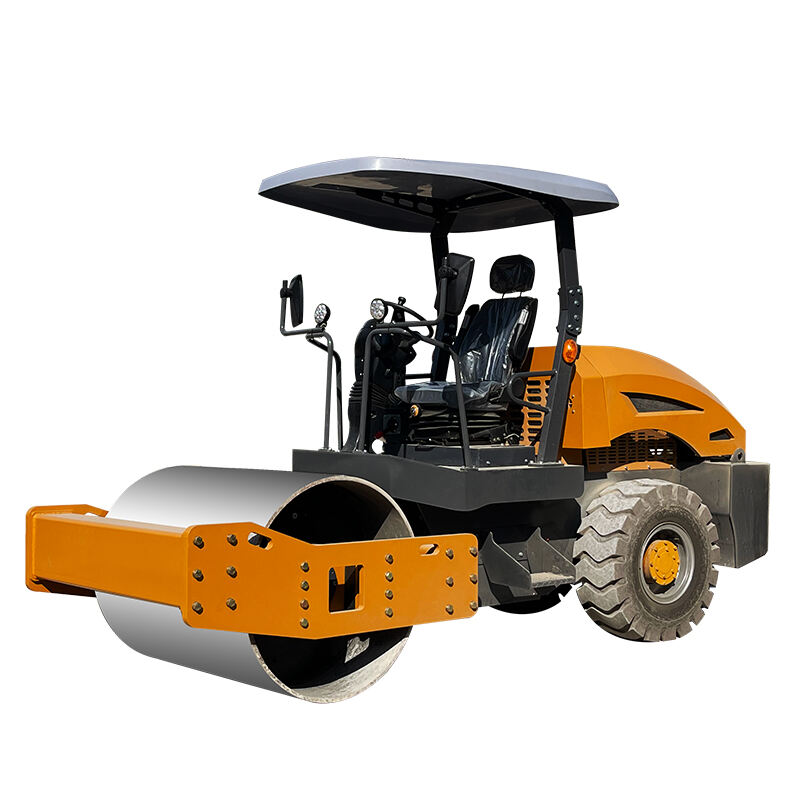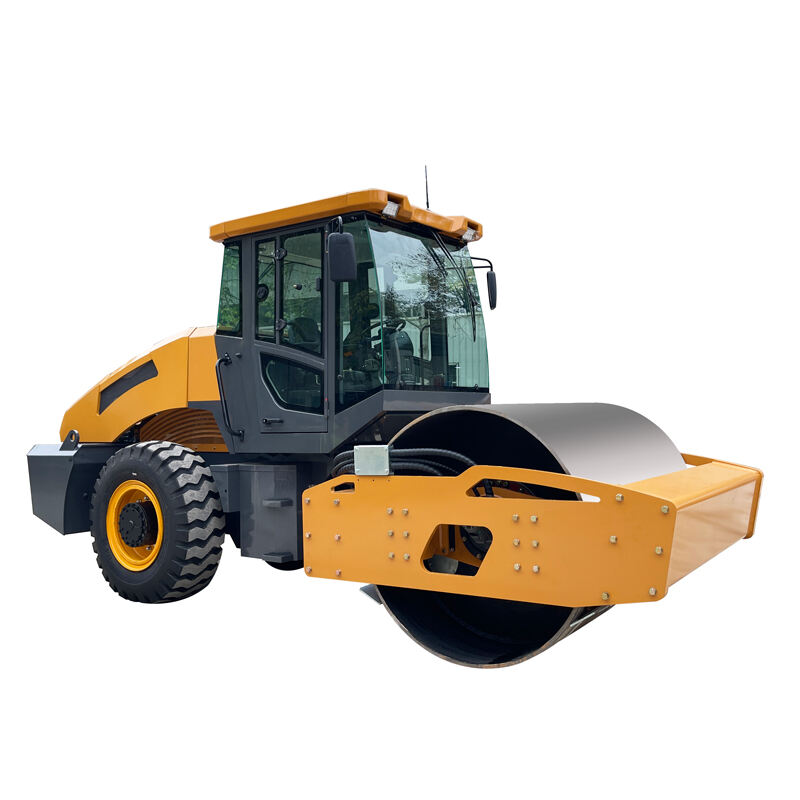The Impact of Compactor Rollers on Soil Stabilization
The Science of Soil Stabilization Through Compaction
Understanding Soil Density and Stability Relationships
When building anything from roads to foundations, soil density matters a lot for keeping things stable and lasting longer. Basically, soil density means how much solid material fits into a certain space, and this affects how well the ground can hold up weight. Different kinds of soil behave differently in construction work. Sand and gravel soils drain water better and pack down more easily than clays and silts which stick together. Moisture also makes a big difference in how dense soil gets during compaction. Too dry and the particles won't pack tight enough, but with just the right amount of moisture, they settle into a tighter configuration. Getting this balance right helps prevent buildings from sinking or cracking over years of use, which is why engineers spend so much time testing soil samples before starting any major construction project.
Why Mechanical Compaction Outperforms Natural Settlement
When it comes to getting soil ready for construction, mechanical compaction beats natural settlement hands down when looking at both speed and structural strength. Natural settling can drag on for years before reaching adequate density and stability, whereas mechanical methods get the job done in days or weeks. Research from various engineering firms shows that mechanical techniques boost soil strength by up to 40% compared to relying solely on nature's timeline. The controlled results from mechanical work eliminate those pesky time-related problems like differential settling that weakens foundations over time. Take the new airport runway in Denver as an example – they used heavy rollers instead of waiting for Mother Nature, and the structure has held up perfectly through three harsh winters already. Mechanical compaction isn't just faster; it delivers the kind of rock solid base that today's demanding construction projects absolutely need.
Vibratory Roller Mechanics in Stabilization
Dynamic Force Application for Cohesive Soils
When it comes to compacting cohesive soils, vibratory rollers really make a difference through their dynamic force applications. These machines work by shaking the ground both up and down as well as side to side. The vertical shaking actually moves around the soil particles and fills in gaps between them. At the same time, those horizontal movements cut down on friction so everything packs together better. Getting the right balance between how fast and how hard these machines vibrate matters a lot depending on what kind of soil we're dealing with. Lower frequencies tend to work better with dense soils, whereas lighter soils respond better to faster vibrations. Research backs this up too, with one notable study showing improved soil characteristics after using these techniques. For anyone involved in construction work where stable foundations matter, knowing how these forces interact with different soils can mean the difference between success and costly problems down the road.
Frequency Adjustment for Optimal Moisture Content
Getting the right frequency settings on those vibratory rollers really matters when dealing with soil moisture during compaction work. There's this delicate dance between how fast the roller goes and what kind of moisture is present in the ground. We've found that when the soil is pretty dry, cranking up the frequency helps pack things down better because those vibrations get deeper into the material. But if the dirt is already damp, going too high just creates problems with all that extra pressure building up inside the pores. Most contractors will tell you they need to run some test compactions first to see what works best for different kinds of soil. Take the Panama Canal expansion as a case study. The engineers there spent weeks figuring out exactly what frequencies would work for each layer of earth they had to compact. They ended up with these custom settings that kept everything stable without causing any unexpected issues later on.
Reducing Air Voids in Granular Soil Matrices
Getting rid of air voids matters a lot when it comes to how well compacted granular soils hold up over time. Those little pockets of air that get trapped inside the soil can really weaken the whole structure if we don't handle them properly during compaction. That's where vibratory rollers come in handy they shake things up so much that soil particles actually move around and pack tighter together, which makes the whole mass denser. Field tests across many construction sites have consistently shown better results after using these vibrating machines for compaction work. To check if we've gotten those air voids down to acceptable levels, engineers often rely on nuclear density gauges these days. The fewer air pockets there are in the soil, the stronger and more stable the foundation becomes, something every contractor knows is essential for any lasting construction project worth its salt.
Operational Advantages of Modern Compactors
Accelerating Project Timelines Through Efficient Compaction
The latest compactors really boost efficiency on job sites, cutting down how long projects take to complete. Take those fancy soil rollers for example they've got better vibration systems and smarter ways of packing earth so everything gets denser much faster. Sites get ready quicker which means crews can stick to their schedules without falling behind. Some big construction jobs actually saved around 30% of their time when switching from old school methods to these new machines. What makes this possible? Better machine designs for sure, plus all the automation features that keep things running smoothly without constant stoppages. Shorter timelines mean real money savings too. Less time spent waiting around translates into lower labor bills, cheaper equipment rentals, and fewer headaches from delays that eat into profits.
Preventing Structural Damage from Soil Shifting
Getting proper soil compaction right from the start helps stop soil movement and protects against damage to buildings and roads. If the ground isn't packed down enough, problems tend to develop over time as the earth shifts around underneath everything. Good compaction work, particularly when using quality compacting machines, cuts down on these kinds of issues significantly. The pros know that methods like running vibratory rollers across the soil actually lock particles together better and makes the whole area stronger at the base level. Real world projects show that paying attention to compaction details really works for keeping structures intact. Modern compactors just make all this possible while following safety standards and green building principles, which means our bridges, highways, and other important infrastructure last longer without falling apart.
Storike Engineering's Soil Stabilization Solutions
SVH60 Handheld Vibratory Roller for Confined Spaces
The SVH60 handheld vibratory roller was made with tight spots and tough terrain in mind. With its compact size and small turning radius, it works great in places where bigger machines simply can't fit through. Think city streets, alleys, or those awkward corners on construction projects. What makes this model stand out? The extended handle reduces operator fatigue during long jobs, while the hydraulic system comes from a well-known domestic manufacturer known for reliable performance. Contractors who've used it often mention how easy it is to handle despite being so powerful. Many talk about getting into those hard-to-reach spots without struggling against the machine. When looking at alternatives for compact compaction needs, most professionals find that nothing else matches the SVH60 when it comes to both flexibility and precise control in limited space situations.
SVH70 Ride-On Model for Medium-Scale Projects
For those working on medium scale construction jobs, the SVH70 ride on vibratory roller really shines thanks to some pretty impressive specs and thoughtful design touches. What makes this machine special is its smooth speed adjustment system that lets operators fine tune their work pace, plus it can roll both directions which saves time when maneuvering around tight spaces. Operators will appreciate sitting comfortably during long shifts because of the SVH70's ergonomic layout. The one key start feature cuts down on pre operation hassle while the hydraulic air cooling system keeps batteries running longer between charges. Looking at what's available in the same price range, few machines match the SVH70 when it comes to getting the job done efficiently without frustrating the crew. That's why many contractors keep coming back to this model for their mid sized compaction needs.
STS04 Articulated Roller with Hydraulic Steering
What makes the STS04 stand out? Look no further than its articulated frame combined with hydraulic steering that lets it tackle all sorts of rough ground without breaking a sweat. The machine handles itself really well in tight spaces too, partly because of those advanced hydraulic motors which allow smooth speed changes on the fly. Contractors who've worked on everything from minor road repairs to massive building sites consistently report solid results with this model. Many businesses have found themselves relying on the STS04 when conditions change suddenly during operations, whether they're dealing with rocky hillsides one day and muddy fields the next.
STS12 Heavy-Duty Compactor for Industrial Applications
The STS12 compactor has been constructed with a robust build to handle tough jobs on construction sites and industrial grounds. Powered by a strong diesel engine that delivers real power without wasting fuel, this machine handles big projects like compacting soil for roads or preparing ground surfaces at factories. What really sets it apart is how durable it stays even after years of hard work. The STS12 includes all sorts of modern tech upgrades that actually work well together for serious compaction needs. Many workers in the field will tell anyone who asks that they prefer the STS12 over similar machines because it just keeps going day after day without breaking down, something not every competitor can claim.
Achieving Long-Term Stabilization Success
Maintenance Best Practices for Compactor Longevity
Keeping compactors running longer and performing better requires some basic maintenance habits that shouldn't be overlooked. The truth is regular upkeep makes a real difference in how long these machines last. Research shows machines that get proper care generally work better and save money on operating expenses down the road. Take a look at what needs checking regularly: engines, hydraulics, those vibrating parts. Miss one of these areas and suddenly there's a breakdown waiting to happen. Most mechanics will tell anyone who listens that keeping moving parts properly lubricated is one of the simplest ways to stop premature wear. Stick with these maintenance routines while following manufacturer guidelines and something remarkable happens. Compactors stay reliable for years instead of months, which means fewer expensive fixes and less time wasted when machines go offline unexpectedly.
Monitoring Compaction Results with Density Testing
Keeping track of soil density matters a lot if we want good compaction results over time, and picking the right tests makes all the difference. Most construction sites need density checks to confirm whether their compaction work actually hits those target numbers for density and strength requirements. The field常用几种方法包括砂锥测试、核子密度仪和橡胶气球法,这些在业内都很常见。有趣的是,定期监测土壤密度和成功稳定结果之间有着明显联系,因为这样可以在压实过程中及时发现问题并作出调整。实际案例表明,那些认真做密度测试的项目往往能获得更好的土壤压实效果,建筑物也因此更加稳固持久。相反,忽视这个步骤可能会导致后期出现各种结构问题。
 EN
EN
 AR
AR CS
CS DA
DA NL
NL FI
FI FR
FR DE
DE IT
IT NO
NO KO
KO PL
PL PT
PT RO
RO RU
RU ES
ES SV
SV TL
TL ID
ID LV
LV SR
SR SK
SK SL
SL VI
VI SQ
SQ ET
ET TH
TH TR
TR AF
AF MS
MS GA
GA HY
HY KA
KA BS
BS LA
LA MN
MN MY
MY KK
KK UZ
UZ KY
KY











